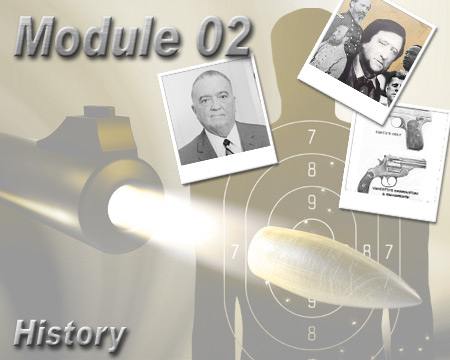Home | Glossary | Resources | Help | Contact Us | Course Map
Archival Notice
This is an archive page that is no longer being updated. It may contain outdated information and links may no longer function as originally intended.
| Author: James E. Hamby |
| James Hamby received a Master's degree from Michigan State University and completed his Ph.D. in forensic science from the University of Strathclyde in Glasgow, Scotland. A firearm examiner for thirty-seven years, Dr. Hamby received his training at the U.S. Army Crime Laboratory in Georgia and has worked in Federal, state, and county crime laboratories. He is a past-president of the Association of Firearm and Tool Mark Examiners (AFTE) and edited the AFTE Journal for twelve years. Dr. Hamby currently directs the International Forensic Science Laboratory and Training Centre in Indianapolis, Indiana. |
Introduction
Firearm and toolmark identification has evolved from visually matching class characteristics to microscopic identification of individual characteristics. The science of firearm and toolmark identification has continued to advance through the application of new and developing technologies. These advancements have led to the ability to link cases within and across jurisdictional boundaries.
This module highlights important events and developments in the history of firearm and toolmark identification. The information can be viewed in the following web pages. Additional reference information is available on the Association of Firearm and Tool Mark Examiners (AFTE) website.
Objectives
At the conclusion of this module, the student should be able to
- describe the major scientific and technological events in the history of firearm and toolmark identification and examination,
- list the major agency and organizational developments in the history of firearm and toolmark identification and examination,
- describe training advancements throughout the history of firearm and toolmark identification and examination,
- discuss the major legal precedents in the field of firearm and toolmark identification and examination.
AFTE Knowledge and Ability Factors
| 142. | Knowledge of which journals, newsletters and professional publications report information applicable to firearm and toolmark examiners |
| 143. | Knowledge of which professional organizations address firearm and toolmark examiners' concerns |
| 105. | Ability to advocate only the propriety of the casework that was performed, and not the position of either the prosecution or the defense |
Additional Online Courses
- What Every First Responding Officer Should Know About DNA Evidence
- Collecting DNA Evidence at Property Crime Scenes
- DNA – A Prosecutor’s Practice Notebook
- Crime Scene and DNA Basics
- Laboratory Safety Programs
- DNA Amplification
- Population Genetics and Statistics
- Non-STR DNA Markers: SNPs, Y-STRs, LCN and mtDNA
- Firearms Examiner Training
- Forensic DNA Education for Law Enforcement Decisionmakers
- What Every Investigator and Evidence Technician Should Know About DNA Evidence
- Principles of Forensic DNA for Officers of the Court
- Law 101: Legal Guide for the Forensic Expert
- Laboratory Orientation and Testing of Body Fluids and Tissues
- DNA Extraction and Quantitation
- STR Data Analysis and Interpretation
- Communication Skills, Report Writing, and Courtroom Testimony
- Español for Law Enforcement
- Amplified DNA Product Separation for Forensic Analysts



